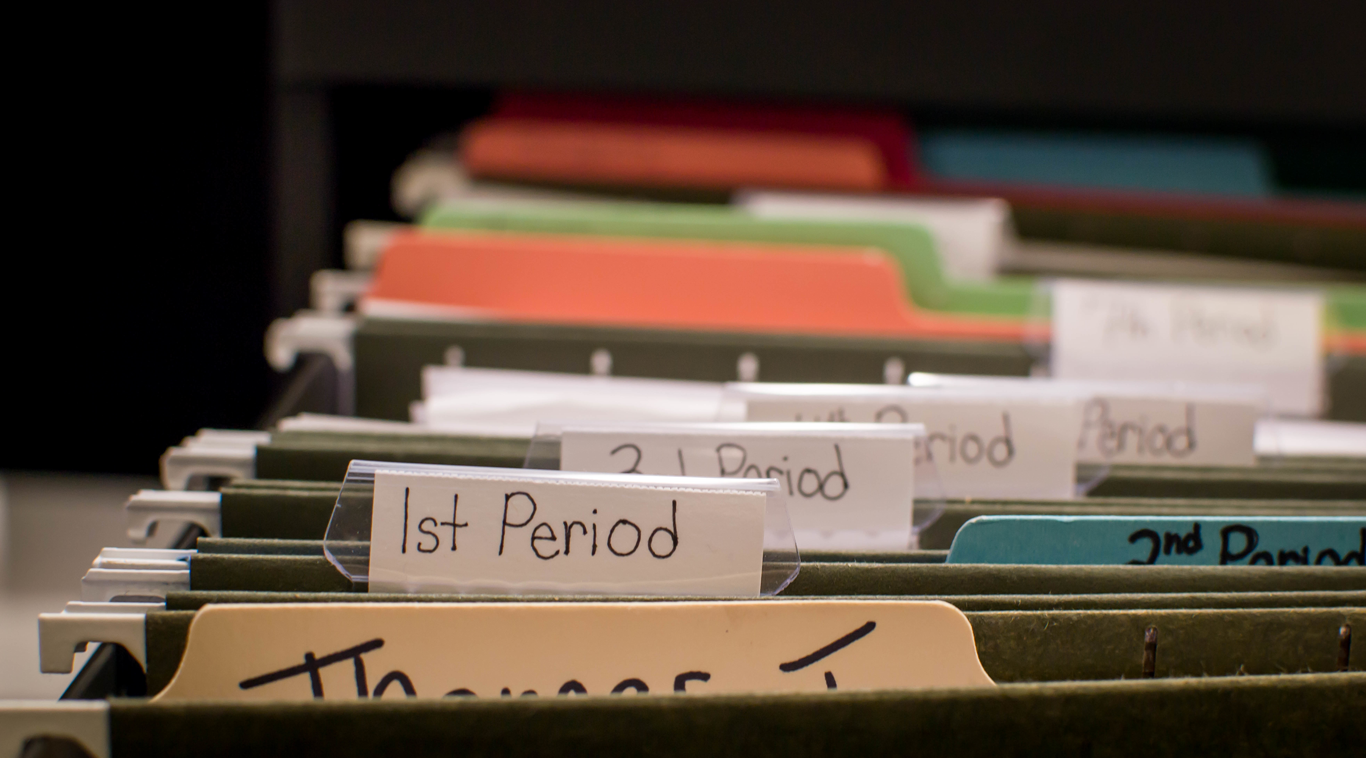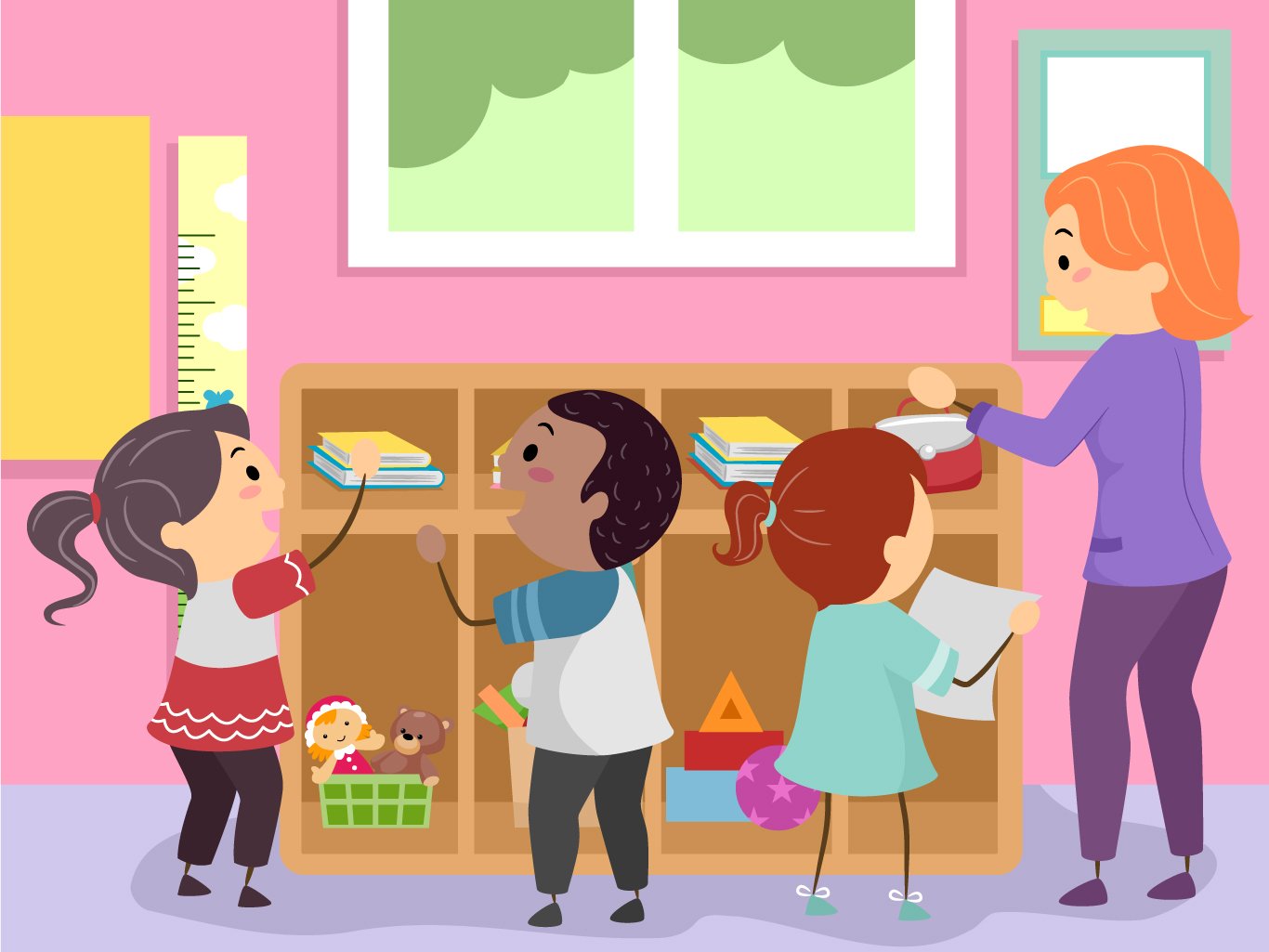My mother was a professional organizer. Yup, it’s an actual profession. She’d go into homes, classrooms, and businesses and organize their chaos. Pretty sure I inherited very few of her organizational guru skills. In fact, as a novice classroom teacher I always knew where everything was, but it was usually buried behind a pile of papers or still in a box in the corner (sound familiar?). I mean, I kept the chaos to the edges, but it was far from organized. Luckily, the longer I was in the classroom, the better organized things became — I picked up a few tricks along the way from my mom as well as from colleagues. Now I’m out of the classroom and visiting many of yours!
Over the years, I’ve noticed a few organizational habits that seem to be common among you, the teachers.

You Are Not Alone
Don’t do it all! Teachers have a LOT on their plate. Trying to restock materials or put away orders of new consumables is something you can easily delegate. Set up the system of where you want things stored (for example, this is the shelf for cotton balls, and the paper clips are stored here) but then bring in help to keep it organized. It’s almost guaranteed you’ll have a student, parent volunteer, or friend who LIKES to organize. Let them go to town!
Where is the. . . ?
The biggest organizational hurdle I see with teachers is they try to control it all. They organize the materials and then, when a student needs more, they hesitate letting students near the extra supplies. I get it. Releasing a seventh grader into your neatly organized closet of materials might result in a tornado of tissue paper, electrical wire, and vinegar. However, we’re teachers — we’re here to teach. Even if it means teaching them how to keep order and respect other’s hard work (because organizing that closet was WORK!).

Familiarize students with where items are and have them collect the materials they need (having things labeled and organized really helps here!). Or, if you worry about students abusing the privilege, assign one or two trustworthy students to get the needed materials (but make sure to rotate this responsibility so it’s not always the same students being pulled away from their work). This frees up a LOT of your time, and you can spend more of your day facilitating instead of gathering materials.
It Is the Way (You Sort)
Decide if you want to sort your materials by the activity (or Mission/Expedition title) or by grouping similar items together (such as all the clay goes in a set bin, and the paper clips go on a certain shelf). There are pros and cons for each, and I’ve seen it successful both ways — the important thing is, if it’s not working (if you can never find what you need when you need it) — change! Even if it’s midyear. Again, you’ll find great helpers among your students or school community.

Broken List
Inevitably things are going to break — set a procedure in your room for when they do. Instead of having students tell you that it’s broken, have them write it down on a list on the board instead. That way, you don’t have to remember who said what when.
Fragile
Speaking of things getting broken — some items are more fragile than others. Don’t be afraid to put those more breakable items in a checkout system. Students can use an item only after checking it out from you and should return it to you at the end of the class. This way, items are stored in a safe location, you keep an eye on things, and students have greater accountability for taking care of the item.
Just Picture It
To help keep your workstations organized, place a picture of what the bin should look like or a list of the materials that belong in the bin on the side or top of the bin. Not only will this help students know where to return items, but they can also use it when deciding which bin has the materials they need.
Regular Spring Cleaning
While we’re talking about bin organization — set a regular time in your schedule to clean out the bins. No matter how organized you are, your students don’t always carry the same level of organization. So, take time for the students to reset your bins every few weeks. Wipe out the bins from anything that has spilled (I’m looking at you baby powder) or put things back in their proper bags/packages. This is also a great time to restock items that are depleted. It might sound like a time sucker, but if you rotate which class cleans out the bins, you can ensure that no one class loses all the time. And, it’ll save you time in the long run because things are restocked before they run out and your equipment is better taken care of. Weirdly enough, when I’ve seen this in schools, kids do a better job of keeping their bins clean after they’re forced to clean up someone else’s mess. Ownership. It’s great.

Baggies
Have lots of them. Or reuse small containers (I like the containers mints come in). You’ll need small containers to store items that easily get lost in the bin. Additionally, if it takes you more than 30 seconds to put an item back in the packaging it came with, you can be assured your students won’t take the time to put it back properly. Just take the frustration (on everyone’s part) out of it and put it in a container that’s much bigger than the item. If kids don’t have to finagle something into a box, there are more chances it will be stored correctly.
Label EVERYTHING
If you expect your students (or parent volunteers or aides or anyone) to help you keep things organized, put a label on it (or if the kiddos are still emerging readers, put a picture on it). Put a label maker on your class wish list. You can thank me later.
Think Ahead
If you’re working on a project that needs to dry or needs more than one class period to complete — where are you going to store it? If you don’t have counter space in your room, can you store the items in bins and stack them? Or is there a closet close by where you can store them? Or is there a room that’s not frequently used (maybe one that’s designated for testing)?
So, get out there and organize away. As Ms. Frizzle always says, “Take chances, make mistakes, get messy!” Just make sure to organize the chaos afterwards, OK?
TOPICS: IN THE CLASSROOM, Teacher Resources, Resources, Teacher Development, Activities, Maker Ed



